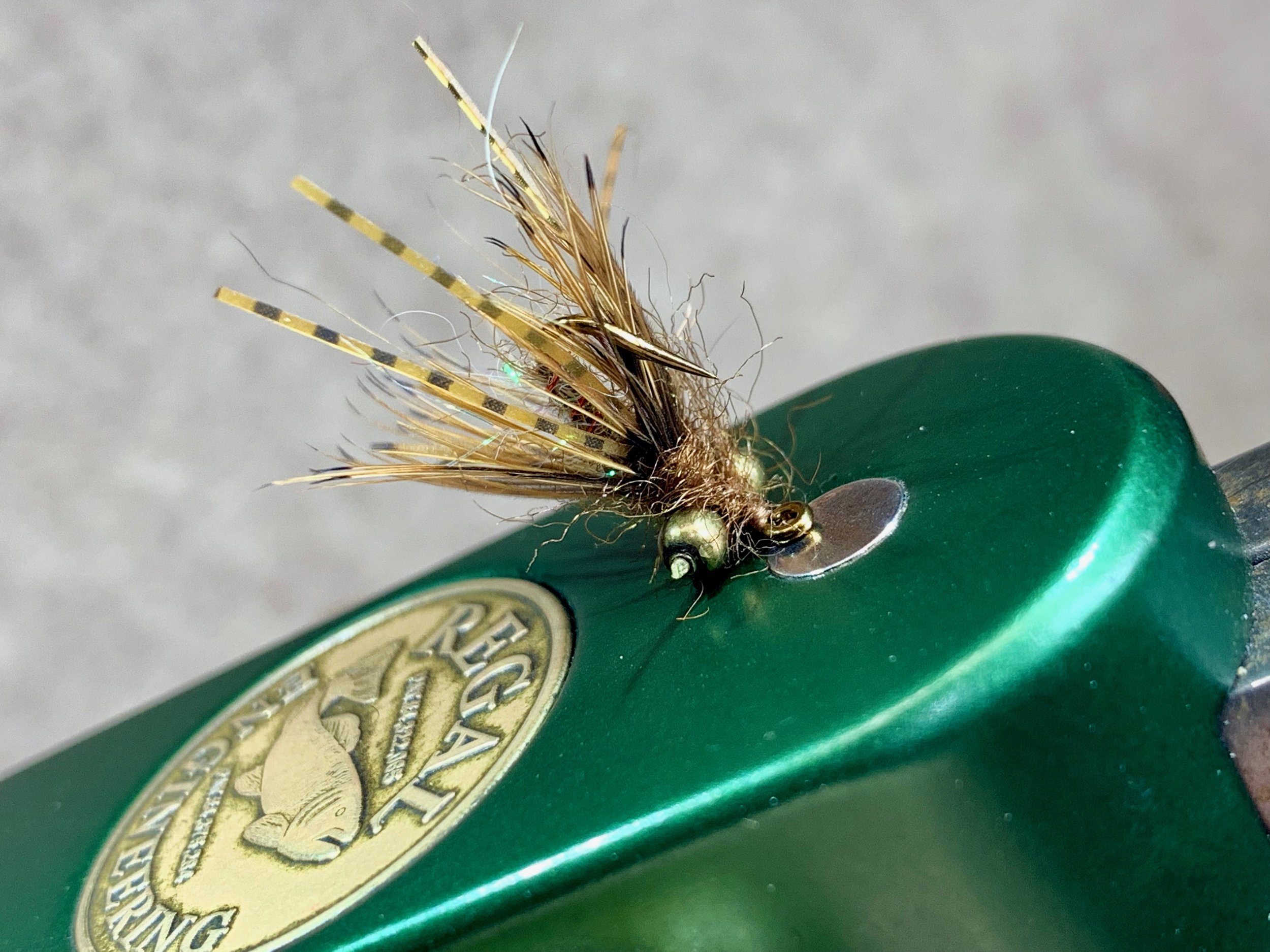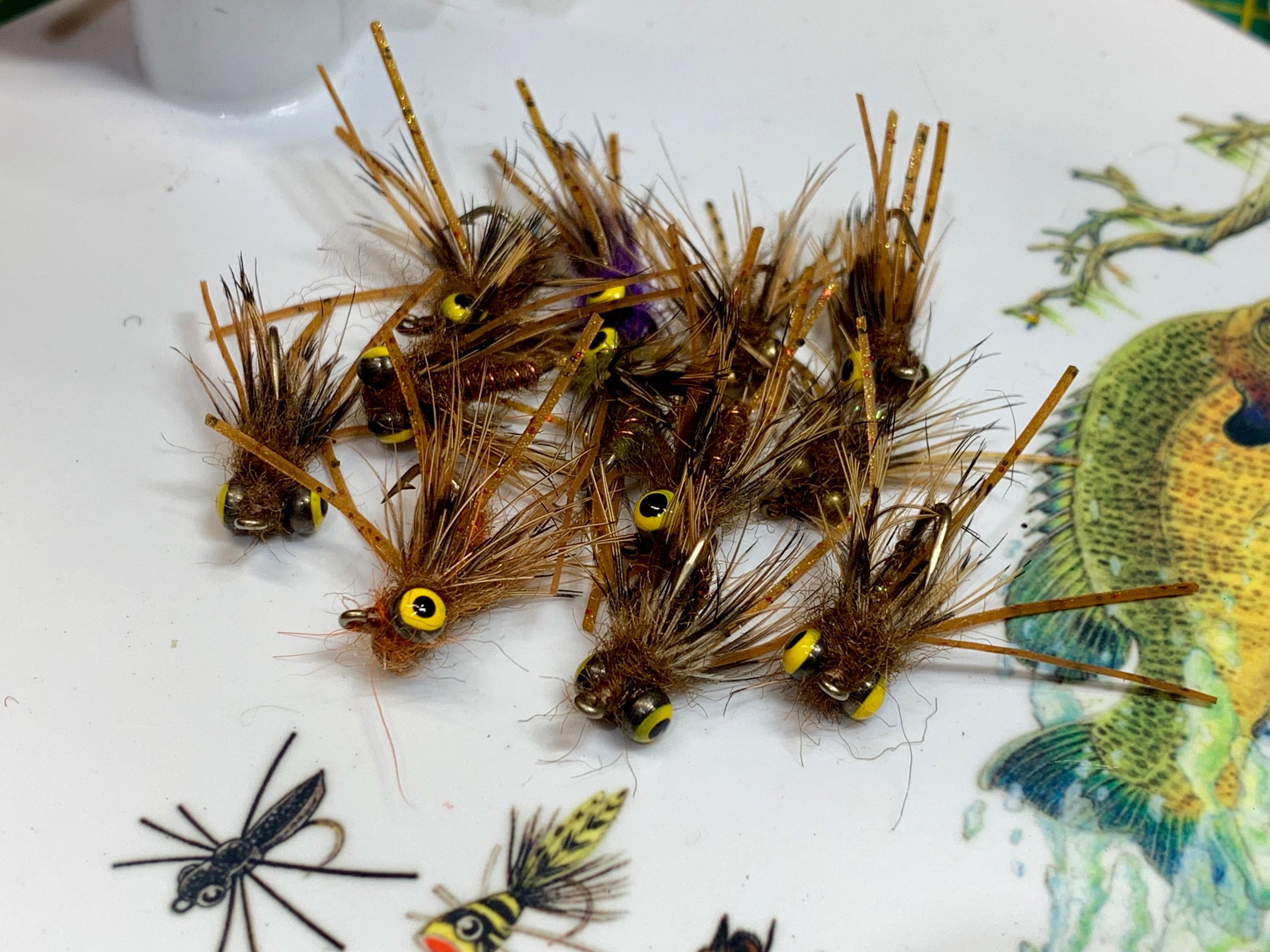Late winter/early spring can be a frustrating time for the panfish fly fodder. Bluegills and other sunfish are starting to make more frequent forays into shallow water, but cooler water temperatures reduce their need for food and keep them sluggish. To consistently catch fish this time of year you need to fish slow, and you need to fish deep. While panfish anglers in the south may be enjoying the first quality topwater fishing of the year, those of us north of the Mason-Dixon line need to look for our fish below the surface.
Read moreSetting Up The Ideal Fly Tying Area
Having a well organized, well lit work area will make you a better fly tier.
Having a dedicated tying space with your tools and materials at the ready will allow you to tie flies more often. The key to getting better at anything is repetition. It’s simple the more you tie flies, the better fly tier you will become.
Read moreThe Carp Nasty
A pint sized Carp Nasty is a great fly for bluegill and other panfish!
Fly designer and fly shop owner, David Hise’s Carp Nasty has been a staple in my carp fly boxes for years. This impressionistic fly pattern does not imitate any particular food item a carp’s diet but looks a little like most of what a carp eats! It could be a crayfish, a big stonefly or mayfly nymph, a hellgrammite, a dragonfly nymph or any number of creepy crawlers that make their living scooting around on the bottom of a pond, lake or stream.
Not Just For Carp
This pattern has proven its worth for me by hooking dozens of carp over the years. What I have enjoyed even more is the numbers of other fish I have taken on this pattern. Bass of both the small and largemouth varieties, catfish and panfish by the score! I usually fish this fly in a size 8 or 6 for carp, and at that size, it is a bit of a mouthful for average bluegill. Smaller fish will often pick it up by its legs and swim off resulting in missed or foul hooked fish. At some point, I began tying the fly smaller to target panfish only. The only change I made to the fly was replacing the painted lead dumbbell eyes with those made from metal bead chain. This was done to lighten the fly and slow its sink rate down a bit. This panfish version of the Carp Nasty is still an excellent carp pattern, especially when the fish are ultra spooky in clear shallow water. The fly lands with a smaller disturbance, and it's lower profile is less likely to cause a wary carp to bolt when you twitch it in front of his nose. However, this pint-sized version really appeals to bluegill and other sunfish.
An evaluation of this past season’s fly boxes revealed a lot of holes in the Carp Nasty section. This little pile of nastiness is heading off to fill up those holes!
The Panfish Nasty?
Nope, it is still a Carp Nasty. Swapping out eyes and reducing the size does warrant a name change, the fly is still a carp nasty through and through. Reducing the size to a 10 or 12 hook creates a fly that is easily taken by small mouthed panfish. The fly is best fished over hard bottoms as you want to crawl and bounce this one along the bottom with frequent pauses. In moving water or when fishing at depths greater than two or three feet you can swap out the bead chain eyes and use small or micro-sized lead dumbbell eyes to provide extra weight to help keep your fly on the bottom.
Mix It Up
I tie this pattern in a variety of colors, mostly olives, browns and blacks to match the color of the natural food items this fly may represent. I also tie it is shades of orange, yellow and purple (which is unusually effective in low light conditions). I use a lighter wire hook than the carp versions I tie. It penetrates better, but care must be exercised when using the fly for carp. A double-digit carp would have little difficulty straightening out a light wire hook. Stick to heavy hooks if you are tying these pint-sized versions for use on carp.
Pattern Recipe:
Hook: Scud Hook size 10 or 12
Thread: Brown or Black 70 denier UTC
Eyes: Metal bead chain or lead eyes
Ribbing: Red copper wire
Body: Dubbing in color of choice (I use a mix of natural and synthetic fibers)
Legs: Pumpkin Barred Nymph Sili Legs
Hackle: Ringneck pheasant body feather
The One Feather Wet Fly
A simple but effective pattern tied with a single feather.
This fly could not be any simpler to tie, and the material list could not be shorter. It consists of one feather and of course some tying thread. The tail, body, and hackle all come from a single feather from the body or rump of a pheasant.
Read moreThe Panfish Pheasant Tail Nymph
The Panfish Pheasant Tail Nymph swaps out natural pheasant tail fibers for some dyed flourescent orange.
The pheasant tail nymph is a classic nymph pattern. Tied with its traditional materials of natural pheasant tail fibers and peacock herl it is a fish catching wonder. The color scheme of the natural materials does an excellent job imitating many mayfly nymphs. A pheasant tail nymph is a killer nymph pattern for panfish. You may ask the question “If this pattern works so well why mess with it?”
Read more




